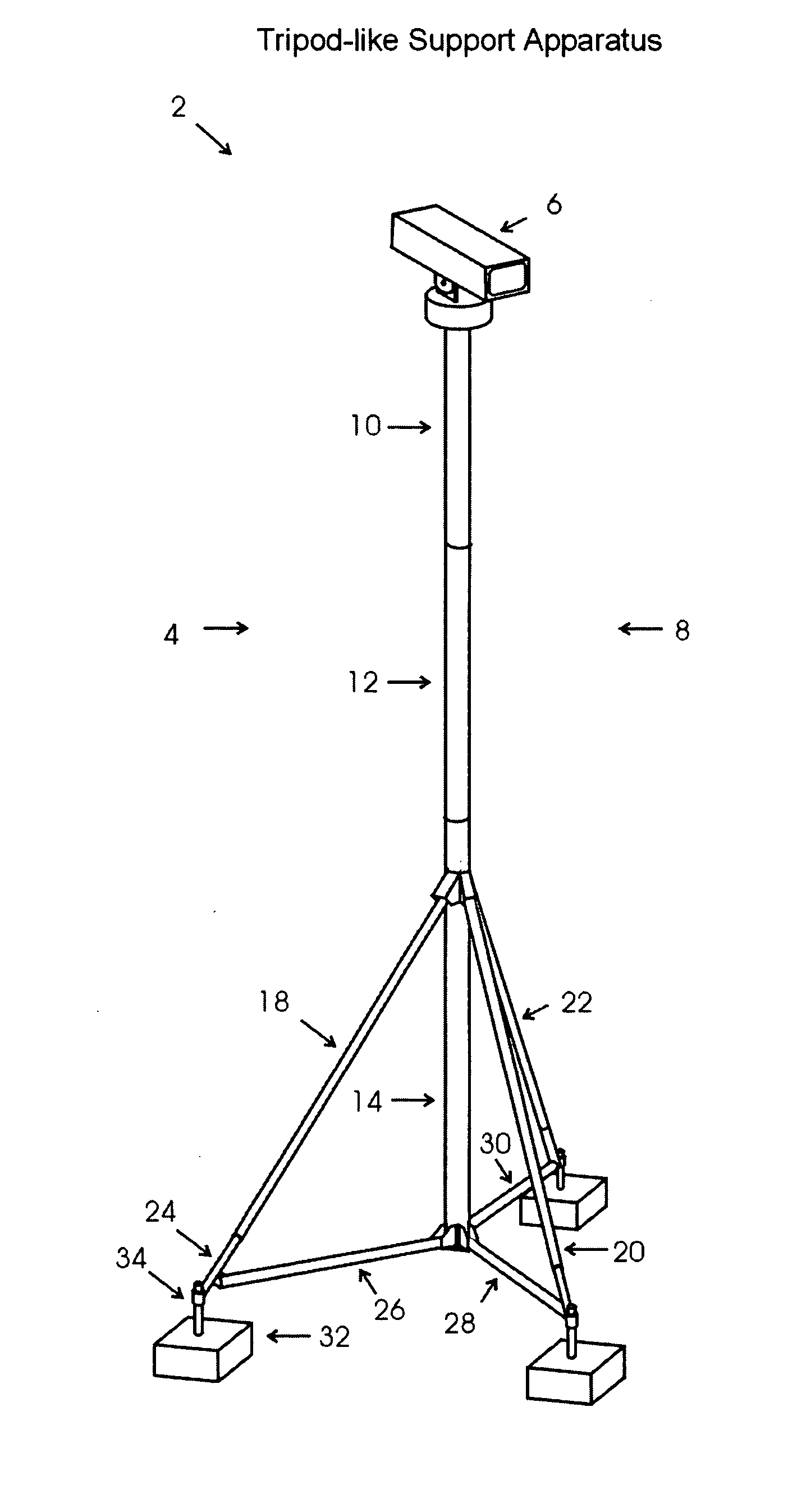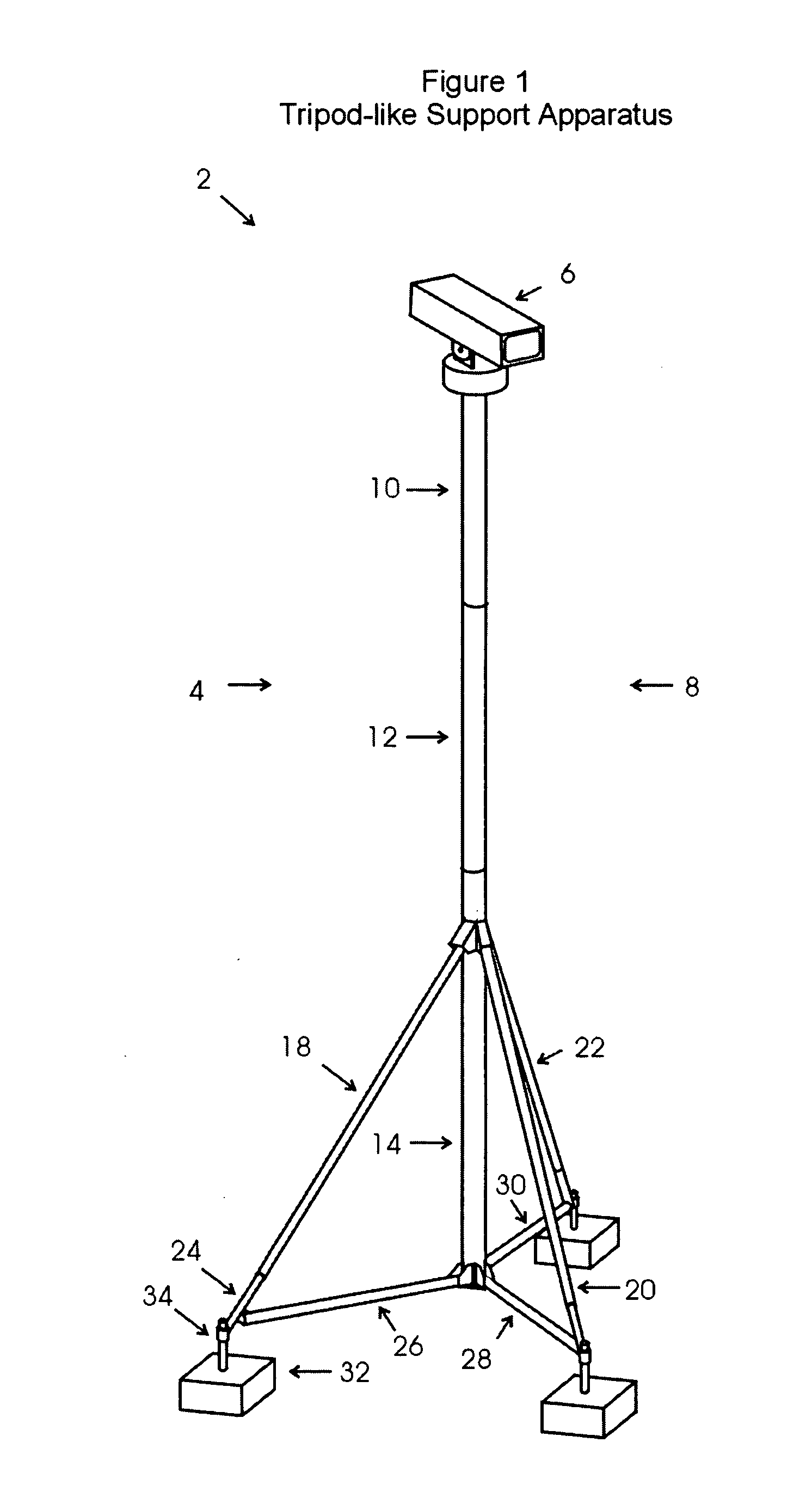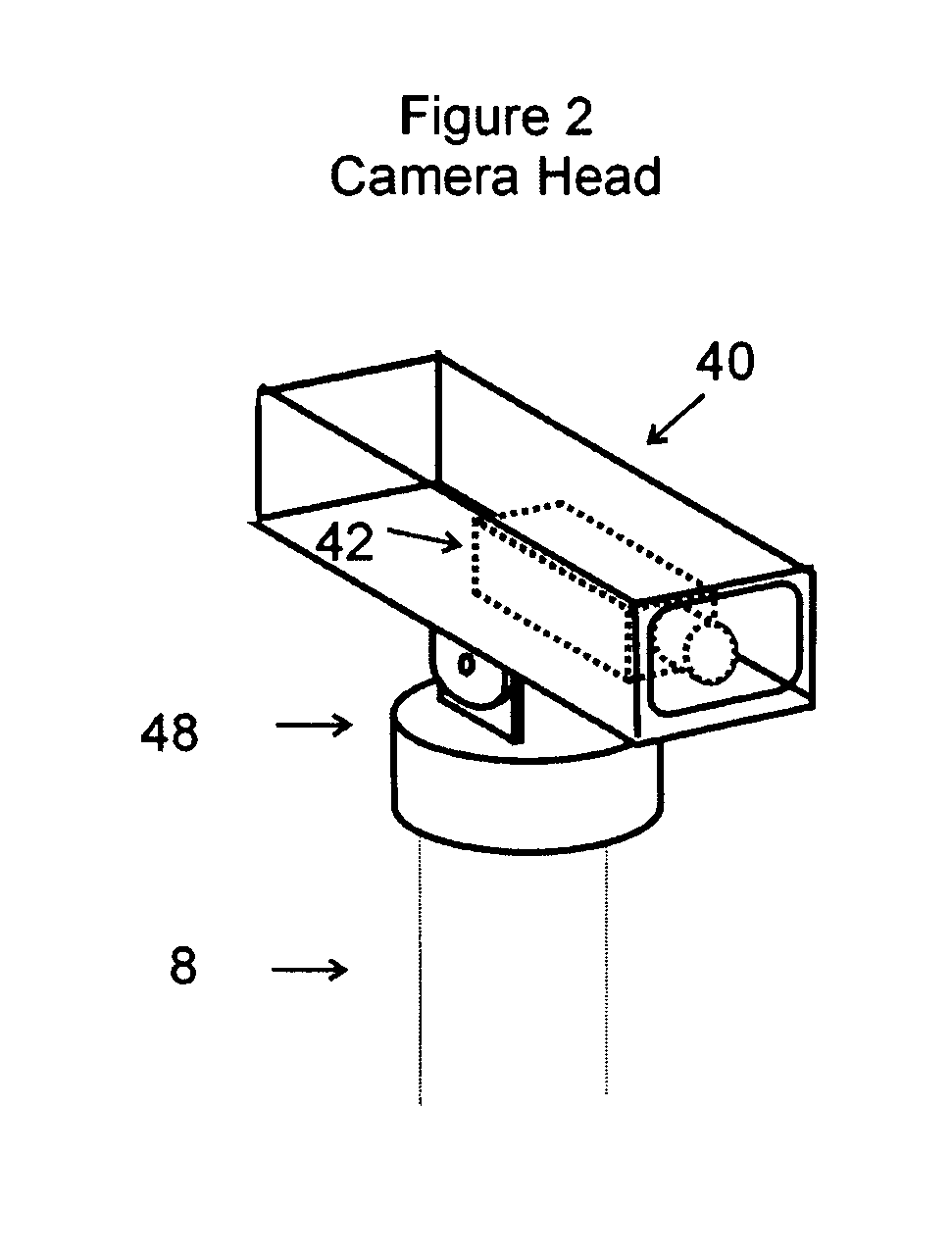Traffic surveillance method and system
- Summary
- Abstract
- Description
- Claims
- Application Information
AI Technical Summary
Benefits of technology
Problems solved by technology
Method used
Image
Examples
Embodiment Construction
[0040]FIG. 1 shows a support apparatus 2 that can be used in conjunction with the method of the present invention. The support apparatus 2 preferably comprises a tripod-like structure 4 for temporarily setting up a video camera head 6 above ground in locations where no existing pole or structure is available. This apparatus 2 can be used in situations where there are no means of positioning the video camera head 6 at the appropriate level above ground. It helps to maintain the video camera head 6 in a substantially fixed and stable position.
[0041] The apparatus preferably comprises a pole 8 that can be extended up to support the video camera head 6 above ground, i.e., it can be made in two or more sections 10, 12, 14 that fit telescopically or which can be joined together using a bayonet style coupling or other fastener. The pole 8 can be made of any conventional strong and rigid material, such as aluminum or steel. For example, pole 8 can be made of a stiff T6061-T6 aluminum, and ...
PUM
 Login to View More
Login to View More Abstract
Description
Claims
Application Information
 Login to View More
Login to View More - R&D
- Intellectual Property
- Life Sciences
- Materials
- Tech Scout
- Unparalleled Data Quality
- Higher Quality Content
- 60% Fewer Hallucinations
Browse by: Latest US Patents, China's latest patents, Technical Efficacy Thesaurus, Application Domain, Technology Topic, Popular Technical Reports.
© 2025 PatSnap. All rights reserved.Legal|Privacy policy|Modern Slavery Act Transparency Statement|Sitemap|About US| Contact US: help@patsnap.com



